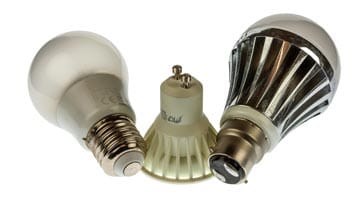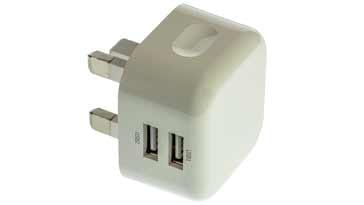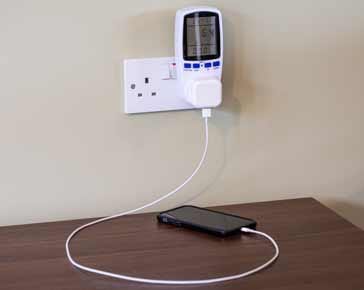Top Tips For Home Energy Saving: a guide
There are some really easy ways of saving energy in the home: our guide shows you how to save energy in the home, often it is very easy
Energy Saving Technology Includes:
Home energy saving technology
Guidelines for home energy saving
List of energy saving gadgets
How to choose best LED light bulbs
Plug-in timer switches
Plug-in power meter / usage monitor
There are many ways for saving energy around the home. It needn't be a difficult task - just understanding a few points about the way electrical and electronic items work can make a huge difference.
By making a few simple changes, there are some useful savings to be made, both in terms of cost and a reduction of the carbon footprint of the home.

There are a few items and changes of the way you use electrical items that can make that a large difference - typically to those appliances that use a lot of power.
However many of them are much smaller. But many of these items are left on all the time when they are not needed, and energy use rises to a surprising figure over a year. Also many small changes can add up to make a much larger overall difference.
High energy uses
One of the key elements of trying to reduce energy consumption and remain as green or "eco" as possible is to look at the usage of anything that is used to generate heat: heaters, water heaters, ovens, kettles, irons, etc.
These often use power levels of 1kW to 3kW and very occasionally more.
Cutting down on the length of time these are used can provide the greatest energy savings in the homes - even small reductions can reduce consumption quite considerably.
However, it must be said that reductions must not be made at the cost of possible health risks. Running the house too cold can result in serious issues, especially for the vulnerable. Make any savings wisely.
How to make energy savings with the kettle
Although not an electronic item, some of the biggest savings can be made by the devices that consume larger amounts of power. Kettles are typically around 2.5kW, so by reducing the time they are on, can significantly reduce the overall amount of energy they consume.
We all tend to put far more water in a kettle than we need. One of the most common uses for a kettle is to make a hot drink.
We often put three, four or more cups worth of water in the kettle, even if only one cup is needed. This could be less than 25% efficient.
By learning to put less water in a kettle, not only will there be a significant saving in energy, but there will be less time to wait as it boils!
Making energy savings with electric ovens & hobs
In recent years, ovens have improved in their levels of efficiency retaining heat far better than older ones. However they still use a significant amount of energy, often consuming up to 3kW of electric power.
Obviously there are savings to be made when selecting a new oven or hob to look at the most efficient ones. However savings can also be made in terms of their use.
There is little that can be done in terms of their actual use, i.e. cooking times are what fixed by what is being cooked. However there can be a tendency to leave the oven on for longer than is needed to warm up. If this can be minimised, and possibly even more than one item cooked at a time, then this can help cut down on any wasted energy.
Using LED lamps to save energy at home
LED lighting cna save considerable amounts of power when compared to incandescent lamps and even the energy saving compact fluorescent lights, CFLs that were used until LED lighting became viable.

Steadily reducing the number of older lamps will see a significant saving in energy usage - old 100watt incandescent lamps can be replaced by LEDs consuming slightly more than a tenth of the power!
Smartphone chargers
There is a lot of talk about switching off smartphone chargers when they are no in use. The truth is that modern smartphone chargers consume virtually no energy when they are not plugged into a smartphone. The energy consumed cannot typically be measured on a home energy usage power meter. They are excellent at this.
However it is different when the smartphone is plugged in. They will obviously need to use power when they are charging the phone, and the efficiency levels at converting the incoming mains power to the 5 volts required for the smartphone is very high - often 90% or more.

The issue occurs when the charging has finished. The charger will still consume a level of power, which is not inconsiderable when compared to that when charging.
Many of us leave our phones plugged in over night to charge. This means that they will be charging for an hour or so, but the remainder of the night the charger will be wasting power.
There are a number of solutions to thi to save energy. One could be to charge the phone in the evening when it can be disconnected after the charge is finished. Another is to have a timer on the charger to turn it off when charging is finished.
Also be aware that older smartphone chargers may not be nearly as efficient and may consume power even when a smartphone is not plugged in. This can result in a small power drain over longer periods which can mount up over time if the charger is not switched off.
As a guide we set a modern generic smartphone charger to charge an iPhone X. The figures are tabulated below:

| Power Consumed by a Modern Smartphone Charger |
|
|---|---|
| Usage | Power consumed (watts) |
| Charging | ~6.0 |
| Charged iPhone | ~0.9 |
| Charger plugged in, nothing connected | 0.0 |
It can be seen that when the charger is plugged in and mains has been applied, but has been connected to the charger to draw current from it, it consumes next to no power. This obviously goes up when the smartphone is charging, but when the smartphone has fully charged and the charger is "idling" power is still consumed.
It was also found that the charging current varied according to the position within the charging cycle.
Saving energy used by televisions
Televisions can have three operating states. On, standby, and when the TV is switched off at the mains socket.
Obviously televisions consume the most power when they are on and operating. However when they are in standby mode they also consume power. The power supply has to remain on to power the little red light, and some elements of the circuitry remain on to download updates and the like.
The electronic circuit designs within televisions have improved in recent years and it is found they are far more energy efficient.
In view of the amount of time televisions can remain in standby, even the low consumption of modern sets can mount up over a 24 hour period, over seven days . . . and 365 days a year, etc.
It can help considerably to turn the device off at the the socket most of the time.
There is a drawback, because downloads often occur at night when some stations close down, there are less viewers and there is less data being transmitted. It can help to leave the TV on occasionally to be able to receive these updates.
it is worth looking at the typical consumption of a typical modern television from a reputable manufacturer and that of an older one.
| Power Consumed by a Modern 40" Television (specification) |
|
|---|---|
| Mode | Power consumed (watts) |
| In operation | 65 |
| Standby | 0.5 |
| Switched off on set | <0.3 |
As the reliability for televisions is very good these days, there will be many older ones in use that have not been optimised for low power consumption, both in use and on standby. Here are the typical figures for a 40inch diagonal screen television from the same manufacturer. As the performance had not been optimised for low power operation in the same way, the differences can be seen.
| Power Consumed by a Older Flat Screen 37" Television (Measured) |
|
|---|---|
| Mode | Power consumed (watts) |
| In operation | 119 |
| Standby | 21 |
| Switched off on the set | 0.1 |
Note Even when the set was turned off by the switch on the set, it still consumed 0.1 W indicating that some circuits are still live under these conditions. It is also worth noting how much more efficient modern televisions are when they are operating.
Games console energy saving
Some of the worst offenders for having a high standby current are games consoles. Their standby mode is used to detect updates for the software they contain as well as being prepared to receive voice commands and commands from remote controls.
As the device is not always required to be available for commands and updates, it is possible to turn them to a state where they consume much less power.
Most of today's games consoles will have some form of energy saving mode. This mode will inhibit the device from checking for updates or commands.
Check the instruction manual for the games console as it is likely to provide instructions on how to achieve this.
Smart speakers
It is worth being aware that smart speakers are another on-all-the-time device.
These smart speakers sit in a room, powered up and awaiting voice commands, and ready to play music.As one of the main appeals they have is that commands can be issued at any time, then they will always be consuming power.
When buying these devices, it is worth considering the electricity consumption and environmental impact.
Radios
Like televisions, many radios also have standby modes. These also consume electricity.
As radios tend to be used for only part of the day, it can be almost as easy to turn them off at the socket to conserve electricity and reduce on wastage.
How to make energy saving easier
It can seem like it can be a real annoyance to keep turning devices off to save relatively small amounts of power. Some may even ask whether it is worth it.
There are several ways that can be used to make it easier.
Make turning things off a habit: One of the easiest and least costly ways of reducing energy wastage is to get into a habit of turning things off when they are not in use. It can be relatively easy to switch things off when this becomes part of a routine.
It can also be extended to filling kettles only as much as is needed, and only using other appliances like heaters and ovens for the minimum time they are needed. Plan when the oven needs to be on, and turn it on then, and turn it off immediately after use. Only fill kettles as much as is needed.
Use an extension strip for multiple devices: Using an extension strip can make it very easy to turn off multiple devices at one. If it is plugged into a socket that is easy to access, this will make it even easier.
Use a timer or a smart switch: Timers and smart switches can be used to help turn devices off when they are no in use.
Simple timers, either mechanical or digital are relatively low cost and can easily be inserted into a mains socket and the device then inserted into the timer. Setting it up will enable the device to be off when it will definitely not be in use.
Another approach is to use a smart switch that can be used remotely to turn devices off when they are not needed. These are more costly than timers, but can be fun to use, often being controlled from a smartphone, etc.
It is worth being aware that both timers and smart switches will use a small amount of current, so this needs to be balanced against the savings that might be made.
Developments with efficient equipment
Just after the turn of the century it was estimated that around 1% of global carbon emissions were caused by equipment in standby mode.
Since then, significant improvements have been made in the level of standby current for devices. One of the industry driving standards or aims has been the One-Watt initiative. This was an energy saving initiative that was introduced by the International Energy Agency, IEA, with the aim of reducing the standby power usage.
It sought to reduce standby power usage by any electrical appliance to no more than one watt by 2010, with a further reduction to 0.5 watts in 2013. This has given rise to regulations in many countries and regions, and has resulted in a huge reduction in the amount of power consumed when devices are in standby.
Its implementation has seen the standby power of televisions fall considerably, and another result has been the improved performance of smartphone and general USB chargers where many of them consume negligible power when they are left plugged into the mains not connected to a device to charge.
Despite the one-Watt initiative the significant increase in always on devices has resulted in an increase in standby and idle power being consumed.
Accordingly it is always ideal if devices can be switched off at the mains.
Saving electricity at home may seem like a mundane topic, but reducing wastage is a key environmental topic, and with energy prices much higher these days, even small energy savings can have a significant cost impact.
By understanding a little more about what uses energy and how much, it can help to reduce the wastage and opt for devices that use less energy.
 Written by Ian Poole .
Written by Ian Poole .
Experienced electronics engineer and author.
More Eco / Green Engineering Topics:
Smart meter technology
Solar electricity generation
Smart grid
Home energy saving technology
LED lights
Energy saving guidelines
Return to Eco / Green Engineering menu . . .



